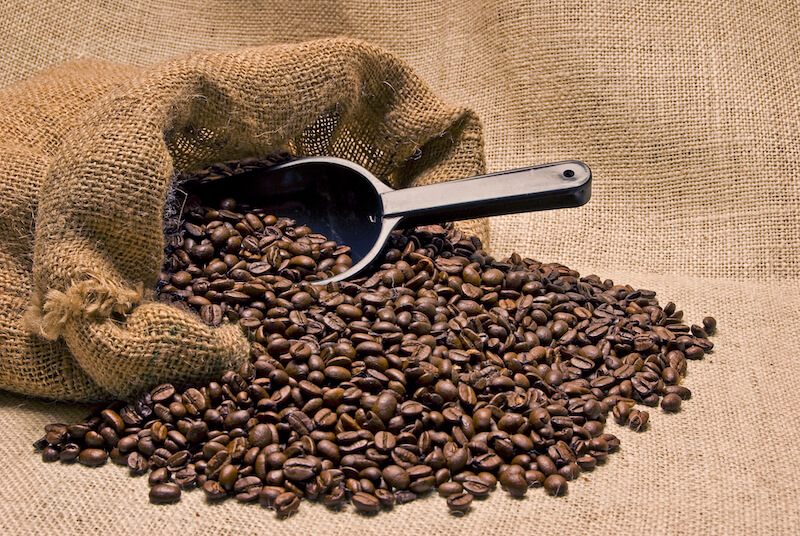Coffee How To, Coffee Tips
Your Guide to Buying Coffee Beans
A beautiful cup of coffee starts at the source: the coffee bean. The convenience of today’s coffee makers gives you the opportunity to brew your own in the comfort of your home. But, when it comes to shopping, quite a few beans are available. Which one do you choose? It can be challenging to navigate through the selection. At Tin Cup, we have some great tips to help.
Purchase Whole Bean Coffee
Pre-ground coffee is convenient, but if you are looking for exceptional taste and flavor, you need whole bean coffee. The outer shell of the bean protects the properties that give off the aromatic and deliciousness of coffee. Once it’s cracked, the best part is now exposed to air which will dampen the character. Keep your coffee tasting the best by waiting to grind it right before you brew. Buying pre-ground coffee will usually mean it goes stale much quicker. Here’s a quick guide to grinding textures:
- Coarse – use in a French Press
- Medium Coarse – use this for your Chemex
- Medium Grind – perfect for drip coffee
- Medium Fine – use for a pour over
- Fine Grind – Espresso or a stove-top espresso pot/maker
- Extra Fine – needed for making Turkish coffee
Buy in Airtight Bag
Unless you can confirm that your coffee beans were roasted within the past two weeks, you want to purchase beans in an airtight bag. We talk a lot about how air will oxidize coffee, and it’s no different in this situation. Anything bought in a grocery store should be tightly sealed. Avoid purchasing coffee that is out of a self-dispenser. These beans will be infrequently exposed to air.
Your best bet is finding something that has been roasted within the past week. Most bags will show the roast date. When you work with a local coffee roaster, your chances of getting fresh roasts are higher. Failure to locate the roast date on the package should entice you to put the bag down and find somewhere else to shop.
You Don’t Want Oily Beans
Let’s say you find a roaster you trust, check the beans aren’t oily before purchasing. During the roasting process, the beans are heated. Carbon dioxide will push oil out. The longer it’s exposed to these high temperatures the more oil is expelled through the cell pores. The colder they can stay during the roasting process the better the cell’s outer integrity. The oil stays thick which means it can’t seep out. That being said, coffee with an oily texture has been over roasted. Over roasted coffee tastes burnt. Conducting the process at the right temperature gives a full, well-round profile. There’s also the chances of the oil causing the grinds to stick together. That could lead to a bad brew.
Know Your Origins
Where the beans were harvested will have a lot to do with the final taste. Everything that is part of the growing process will impact the results. There are roughly 50 countries who grow coffee, but the best places will come from somewhere along the equator.
- Columbian: thousands of small farms exist here dedicated to the growing of coffee. The result is a mild bean that is well-balanced in sweetness and acidity. Occasionally, it will have a nutty flavor.
- Brazil: Brazilian coffee will have a broader palette because of the different landscapes. Predominantly, they are full-bodied with a nutty taste. Buy these beans if you love espresso.
- Ethiopia: Different processing methods are used in Ethiopia. Buy from here if you like your coffee to taste fruity, floral, wine-like, or tea-like.
- Kenya: Not much shade is available while the coffee plant is growing. That means you get something a little more savory-sweet. Notes of black currant are often associated with Kenyan beans.
- Indonesia: Indonesia is synonymous with Java and Sumatran coffee. Your beans will have a deep body and lower acidity.
Choose Your Roast
Now that we are familiar with where the beans come from and the impact they have on final flavor, you can build by purchasing in your favorite roast.
Light Roast
Choose the light roast if you prefer a cup that is more acidic. It retains more caffeine than the other roasts and doesn’t have a strong flavor. Most light roasts are floral, sweet, or fruity because they taste most like the bean.
Medium Roast
The best all-around would be the medium roast. The profile is fuller and is slightly less acidic compared to the light. You get balanced aroma, flavor, and acidity. Be aware that it will have a little less caffeine.
Dark Roast
Dark roast used to rule when the ability to come by fresh coffee was challenging. The first wave of coffee included pre-ground and freeze-dried varieties. They were slowly roasted to prolong shelf-life. Today, dark roast still exists and is practiced with a little more care. Choose dark if you like your cup to have a smoky, bitter flavor.
Nashville Coffee Roaster
Buy coffee with intention. That means, take into consideration where it comes from, the roasting method, and your expiry dates. Working with a local Nashville coffee roaster like Tin Cup will give you access to this kind of information. Our team is available to provide you with the information you need about the roasting process and the best brewing methods.

